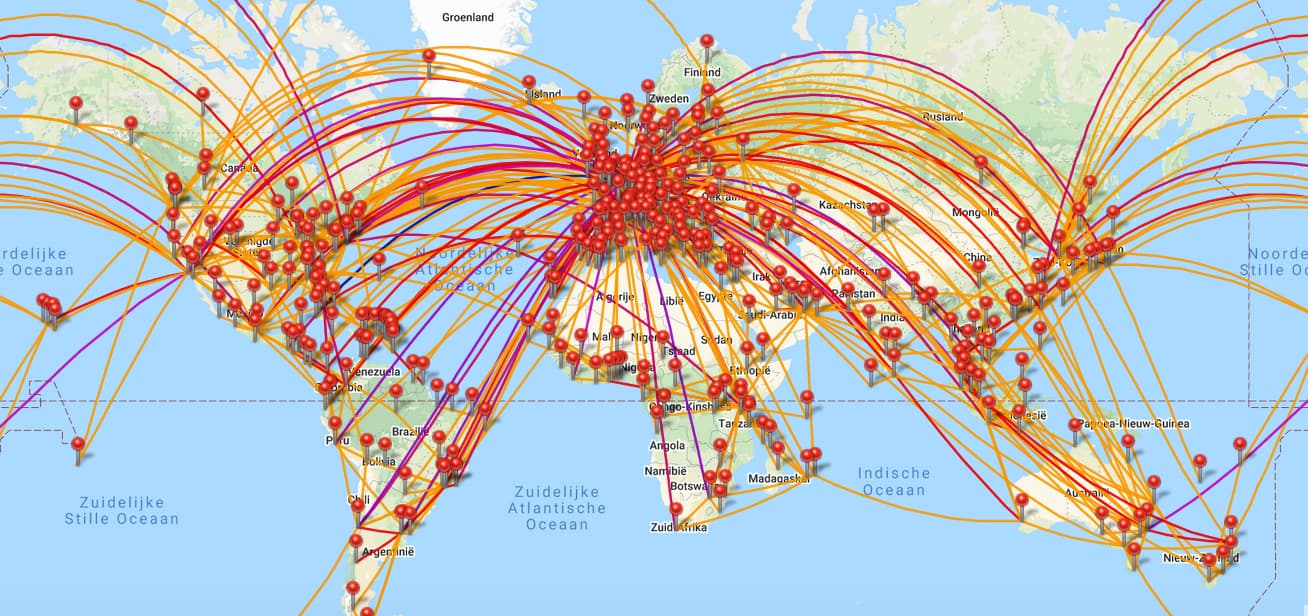
Flight path optimization is a game-changer for aviation. But what exactly does it mean? Flight path optimization involves adjusting the route, altitude, and speed of an aircraft to achieve the most efficient journey. This process saves fuel, reduces emissions, and cuts costs. Airlines and pilots use advanced software and real-time data to make these adjustments. Imagine a plane taking a slightly different route to avoid strong headwinds or climbing to a higher altitude for smoother air. These small changes can make a big difference. Curious about how this works and its benefits? Let's dive into 19 fascinating facts about flight path optimization!
Key Takeaways:
- Flight path optimization saves airlines millions of dollars by choosing efficient routes, reduces carbon emissions, and ensures smoother, safer flights by avoiding turbulence and severe weather.
- Advanced technology like GPS, AI, and satellite navigation revolutionizes flight path optimization, leading to cost savings for airlines, increased punctuality, and extended aircraft lifespan.
What is Flight Path Optimization?
Flight path optimization is the process of determining the most efficient route for an aircraft to travel from one point to another. This involves considering various factors such as weather, air traffic, fuel consumption, and safety. Here are some fascinating facts about this crucial aspect of aviation.
-
Fuel Efficiency: Optimizing flight paths can significantly reduce fuel consumption. Airlines save millions of dollars annually by choosing the most efficient routes.
-
Environmental Impact: Reduced fuel consumption leads to lower carbon emissions. This helps in minimizing the environmental footprint of air travel.
-
Weather Considerations: Pilots and air traffic controllers use real-time weather data to avoid turbulence and severe weather, ensuring a smoother and safer flight.
-
Air Traffic Control: Air traffic controllers play a vital role in flight path optimization by managing the flow of aircraft and preventing congestion in the skies.
Technological Advances in Flight Path Optimization
Technology has revolutionized how flight paths are optimized. Advanced software and systems are now integral to this process.
-
GPS Technology: Modern aircraft are equipped with GPS systems that provide precise location data, enabling more accurate and efficient route planning.
-
Flight Management Systems (FMS): These onboard computers help pilots plan and adjust flight paths in real-time, optimizing for fuel efficiency and safety.
-
Satellite Navigation: Satellites provide global coverage, allowing for more direct routes and reducing the need for detours.
-
Artificial Intelligence: AI algorithms analyze vast amounts of data to suggest the most efficient flight paths, taking into account various dynamic factors.
Economic Benefits of Flight Path Optimization
Optimizing flight paths isn't just about safety and efficiency; it also has significant economic benefits for airlines and passengers.
-
Cost Savings: Airlines save on fuel and maintenance costs, which can translate to lower ticket prices for passengers.
-
Increased Punctuality: Efficient flight paths reduce delays, leading to better on-time performance and customer satisfaction.
-
Extended Aircraft Lifespan: Optimized routes reduce wear and tear on aircraft, extending their operational life and reducing maintenance costs.
Challenges in Flight Path Optimization
Despite the benefits, there are several challenges that need to be addressed in flight path optimization.
-
Airspace Congestion: Busy airspaces can limit the ability to choose the most efficient routes, leading to delays and increased fuel consumption.
-
Regulatory Constraints: Different countries have varying regulations that can affect flight path planning and optimization.
-
Technological Limitations: Not all aircraft are equipped with the latest technology, which can hinder the optimization process.
-
Human Factors: Pilots and air traffic controllers must work together seamlessly, and human error can sometimes impact the efficiency of flight paths.
Future of Flight Path Optimization
The future holds exciting possibilities for flight path optimization, with ongoing research and development aimed at making air travel even more efficient and sustainable.
-
NextGen Air Traffic Control: This initiative aims to modernize the air traffic control system, incorporating advanced technologies to improve efficiency and safety.
-
Green Aviation: Research is focused on developing more sustainable aviation practices, including optimizing flight paths to reduce environmental impact.
-
Autonomous Aircraft: The development of autonomous aircraft could revolutionize flight path optimization, with AI systems handling route planning and adjustments.
-
Global Collaboration: International cooperation is essential for optimizing flight paths on a global scale, ensuring that air travel remains safe, efficient, and sustainable.
Final Thoughts on Flight Path Optimization
Flight path optimization isn't just for pilots and airlines. It's a game-changer for anyone interested in aviation. By reducing fuel consumption, it helps save money and protects the environment. Advanced technology like GPS and real-time data makes flights safer and more efficient. Pilots can avoid bad weather, turbulence, and other hazards, ensuring smoother journeys. Airlines benefit from lower operational costs and improved punctuality. Passengers enjoy shorter flight times and fewer delays. This innovation also supports global trade by making cargo transport faster and more reliable. Understanding these benefits highlights the importance of continuous advancements in aviation technology. So, next time you board a plane, remember the incredible science and technology working behind the scenes to make your flight as efficient and safe as possible. Flight path optimization truly revolutionizes the way we travel, making the skies friendlier for everyone.
Frequently Asked Questions
Was this page helpful?
Our commitment to delivering trustworthy and engaging content is at the heart of what we do. Each fact on our site is contributed by real users like you, bringing a wealth of diverse insights and information. To ensure the highest standards of accuracy and reliability, our dedicated editors meticulously review each submission. This process guarantees that the facts we share are not only fascinating but also credible. Trust in our commitment to quality and authenticity as you explore and learn with us.


